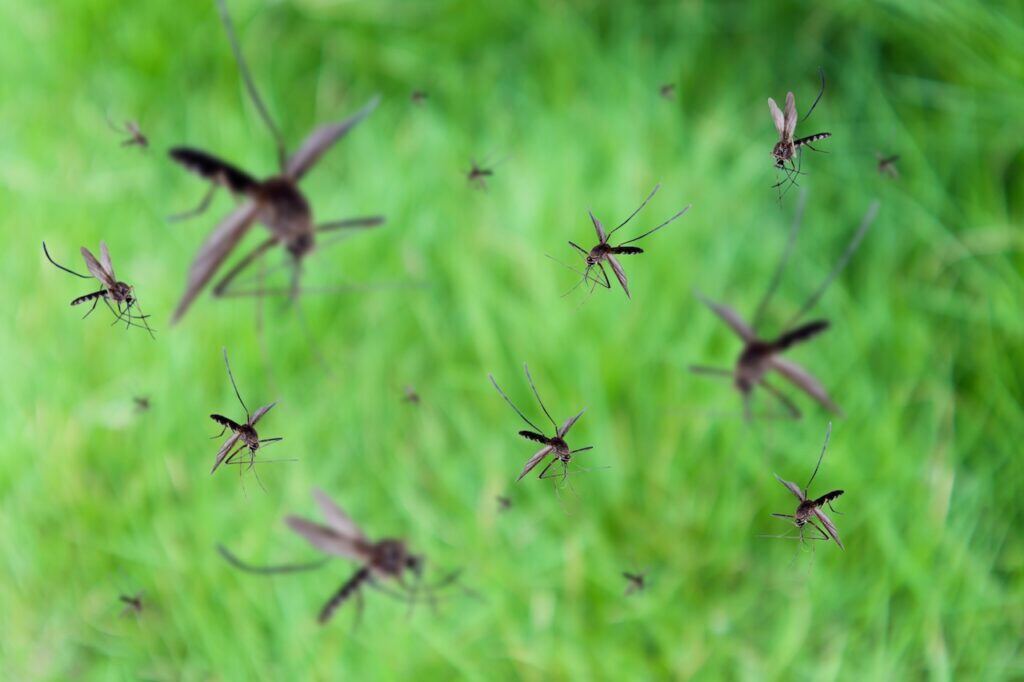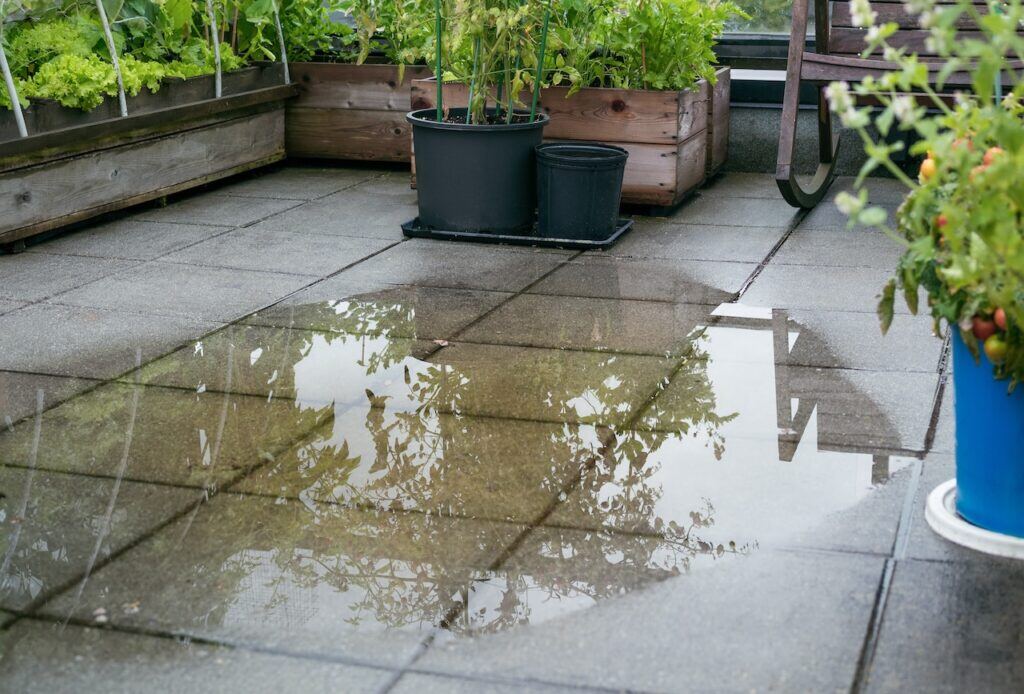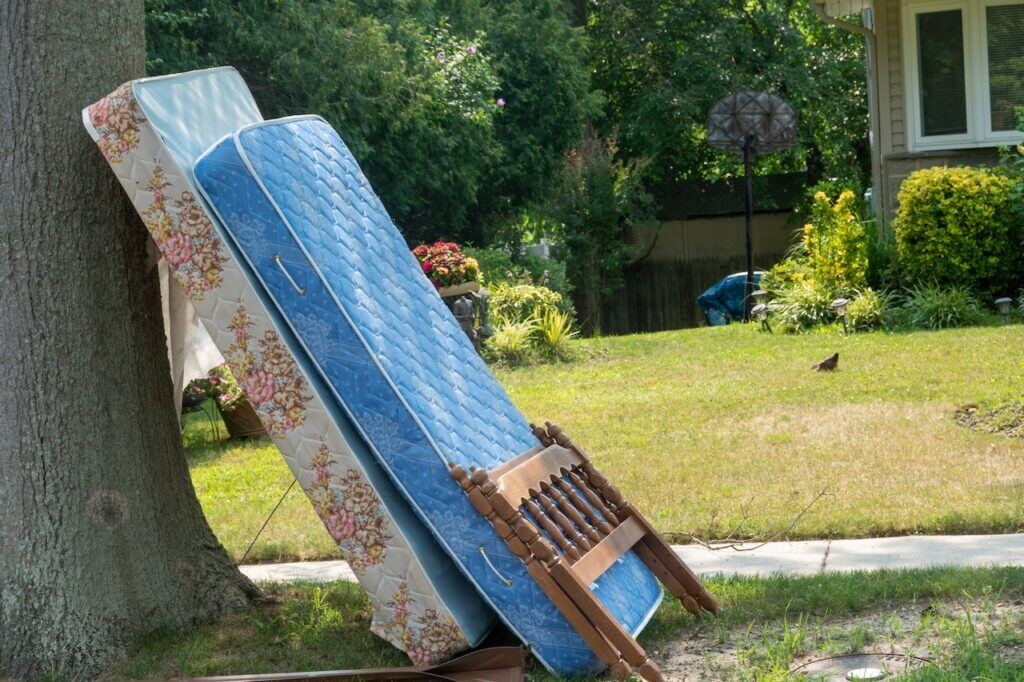Stagnant water isn't just a minor annoyance; it can harm your health and property! Whether it accumulates in puddles, ponds, or neglected containers, the water provides an ideal breeding ground for harmful microorganisms, such as mosquitoes and waterborne pathogens, which can spread diseases. Additionally, stagnant water can impact property, causing structural damage and erosion. In this blog, we'll discuss the dangers of standing water, explore what can happen if it stays around for too long, and how to keep it away from your property.
The Consequences of Stagnant Water
Mosquito Haven
The risk of mosquito-borne diseases increases exponentially with stagnant water, a common breeding ground. Mosquito larvae can grow in as little as a tablespoon of water, and it takes only a few days for the eggs to hatch and turn into adult mosquitoes. Once mosquitoes start breeding, they can quickly multiply, creating a severe health hazard. Mosquitoes are carriers of various diseases, such as malaria, dengue fever, Zika, and the West Nile virus, which can be fatal in severe cases.
Mould and Mildew Growth
When mould and mildew are left to grow in still water, they can release harmful spores into the air. These spores can cause many respiratory problems, including coughing, wheezing, and difficulty breathing. Individuals with allergies or asthma may be particularly susceptible to these health issues. In addition, mould and mildew can cause skin and eye irritation, headaches, and fatigue. If you or anyone in your household is experiencing these symptoms, seek medical attention immediately.
Moreover, mould and mildew growth can weaken the structural integrity of your house or business, leading to further damage and potentially costly repairs. Mould can penetrate walls, ceilings, and floors, causing them to deteriorate and collapse. This damage can make your property unsafe and require extensive restoration work.
Structural Damage
Stagnant water can damage your building or home more than you might think. When water seeps into structural materials, it can severely weaken the foundation of a building, causing cracks in the walls, ceilings, and floors. The longer the water remains, the more damage it can do, compromising the building’s structural integrity and leading to sagging, warping, or even collapse in extreme cases. It can also cause wooden structures like floors and walls to rot and decay, posing a significant safety hazard. Weak wooden fixtures can break, fall, or collapse, resulting in injuries or even fatalities.

Mosquito larvae can thrive in very little water, leading to a mosquito problem.
Slip and Fall Hazards
Besides causing structural damage, stagnant water can create dangerous slip-and-fall hazards that put people at risk of injury. The slick surface makes it easy for anyone to lose their footing, especially those already vulnerable to falls, such as children and older adults. Slip and fall accidents caused by stagnant water can result in serious injuries, such as broken bones, head injuries, and other physical traumas. The impact of a fall on hard concrete or other solid surfaces can be severe, causing long-term damage or even permanent disability.
The Effects of Prolonged Exposure to Stagnant Water
Lengthy exposure to stagnant water can cause extensive harm to our well-being. Below, we explore some of the numerous health consequences that can result from exposure to stagnant water:
Skin Rashes.
Stagnant water can become a breeding ground for harmful pollutants like chemicals, pesticides, and animal waste. These contaminants can wreak havoc on your skin, causing irritation and rashes. Skin-to-water contact in contaminated water sources can lead to infections and allergic reactions, particularly for individuals with sensitive skin. To make matters worse, exposure to tainted water can result in contact dermatitis, a bothersome skin rash brought on by skin irritation or allergic reactions to specific substances. The symptoms of contact dermatitis, including redness, inflammation, and persistent itching, can be challenging to alleviate if not promptly treated.
Infectious Diseases.
Stagnant water can pose significant health risks as it can harbour harmful bacteria and other microorganisms, including viruses, parasites, and fungi. These microorganisms can cause gastrointestinal problems, such as diarrhea, vomiting, and abdominal pain if ingested or come into contact with the skin. This is because it often contains high levels of fecal matter, chemicals, and other pollutants that are dangerous to human health.
Wound Infection.
Standing water can also lead to wound infections when an open wound or cut is exposed to contaminated water. The presence of bacteria and other harmful microbial growth in the water can enter the wound, potentially causing an infection. Those with weakened immune systems or underlying health conditions are especially vulnerable. Therefore, taking necessary precautions to avoid exposure to stagnant water and keeping wounds clean and covered to prevent infection is crucial.

More water in your garden isn’t always a good thing.
How to Prevent and Eliminate Standing Water
Proper Drainage
Have a proper drainage system to prevent standing water from accumulating on your property. A reliable irrigation system ensures that excess water is directed away from the building’s foundation and surrounding areas. Without an effective drainage system, water can accumulate in pools, creating a breeding ground for mosquitoes and other insects. Additionally, it can cause damage to the structure, leading to potential structural issues and costly repairs.
Installing a gutter and downspout system is one way to prevent stagnant water. Gutters collect rainwater that falls on the roof and channel it to the downspout, which guides it away from the building. Ensure that the gutter system is properly maintained and free of debris, such as leaves, twigs, and other debris that can clog the gutters and prevent the water from flowing smoothly.
Another way to prevent standing water is by grading the land around the property. The ground should slope away from the building’s foundation and toward any nearby storm drain to ensure water flows out and doesn’t pool up. Proper grading prevents water from accumulating in low-lying areas and around the foundation, which can cause structural damage and encourage mould and mildew growth.

There are several ways to prevent stagnant water.
Fill Low-Lying Areas
Low spots on your lawn, such as basins, depressions, valleys, or small holes, pose a significant risk of accumulating water and leading to stagnant water. If left unaddressed, water can erode the soil, making it unstable and vulnerable to damage. Fill these areas with dirt or gravel to redirect the water flow away from the property to avoid such issues. Doing so ensures that your lawn remains healthy and sturdy, free from the potential damage caused by standing water.
Plant Trees and Shrubs Strategically
Strategically planting trees and shrubs can also prevent puddles. Plants absorb water from the soil, reducing the amount of water that could pool on the surface. Choose a plant species that can thrive in wet soil conditions. Planting vegetation along slopes and hills can also prevent erosion and runoff formation. The roots of trees and shrubs will help stabilize the soil, making it less prone to being washed away by rainwater.
Regular Maintenance
Maintaining your gutters, downspouts, and drainage systems ensures they function correctly and prevent stagnant water from accumulating on your property. Failing to do so leads to blockage and damage, rendering them ineffective and causing water to overflow and pool on your property. Inspect your gutters, downspouts, and drainage systems often after heavy rainfall or storms. Remove any debris, such as leaves or twigs, that may have accumulated and caused clogged drains. Thoroughly clean out the gutters and downspouts so water flows freely through them.
You should also check for any signs of damage or wear, such as cracks or leaks in the gutters or downspouts, and repair or replace them as necessary. Broken gutters and downspouts can lead to water leakage, compromising the foundation of your property and causing standing water.
Install a French Drain
A gravel-filled trench known as a French drain can effectively redirect surface water and groundwater from a specific area. Installing a French drain system surrounding your property can avert stagnant water issues as the excess water is diverted away. Installing French drains can vary based on your property’s drainage needs and specific requirements. Seeking assistance from professional drainage contractors can assist in identifying the most suitable design and installation for your property.

Items on your lawn might cause water to accumulate.
Clean and Maintain Gutters and Downspouts
Clogged gutters and downspouts can prevent rainwater from draining properly, leading to water pooling around the foundation of your property from rainfall. Regularly cleaning and maintaining gutters and downspouts can prevent this from happening. Remove any leaves, twigs, and debris from your gutters and downspouts, and check for any damage or leaks. Also, verify that your gutters and downspouts are properly sloped to ensure water flows freely to the ground.
Standing water might not seem like a big deal, but below its murky surface lies a plethora of issues. Not only is it an unpleasant sight, but it can also lead to health hazards and safety concerns. Don’t wait for the situation to worsen; take steps to prevent stagnant water and safeguard your home and family. And if you’re already grappling with stagnant water, don’t hesitate to get help from experts who can address the problem. Protect your property and your well-being by being vigilant.
Are You Experiencing Property Damage? Call PuroClean Today!
If you’re looking for a reliable name in the restoration industry, trust PuroClean. We offer efficient and effective property damage restoration services to commercial and residential property owners. Our certified professionals are equipped to handle various disasters like fire, water, mould, and more.
Property damage can be stressful, so we provide prompt and professional restoration services. Our team uses state-of-the-art equipment and techniques to mitigate damage and prevent future problems. We offer 24/7 emergency response services, so count on us to be there whenever damage strikes. Please visit our website or contact us at (877) 261-7876 for more information.
